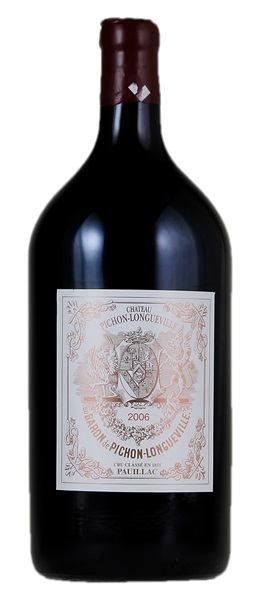Estimate

Aromas of incense, charcoal, smoked meats, and the classic creme de cassis that one finds in the top Pauillacs. Aromatics are still retrained, but the wine is full-bodied in the mouth, tannic, backward, and set for a relatively long life.
There's an excellent dark color to this, with blowsy, rich aromas of crushed blackberry and currant. Full-bodied, with velvety tannins and a long finish.
Pungent, high-pitched aromas of blackberry, cassis, minerals, bitter chocolate and mocha. Suave, fine-grained and densely packed, with lovely violet lift to its concentrated dark fruit and mineral flavors. Juicy acidity and serious...
Positively sumptuous on the nose. Rich, almost chocolaty on the nose and rich palate entry.